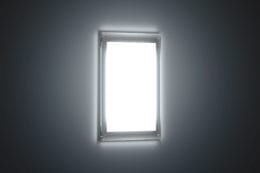
Shorter daylight, colder temperatures and the beginning of fall and winter can trigger feelings of low mood, lack of motivation, loss of interest and fatigue and seasonal depression. The “winter blues”, formally known as seasonal affective disorder (SAD) starts to become apparent in the fall, pique in the winter and resolve in the springtime and is more apparent for individual living in the Pacific Northwest and the Northeast where grey skies are prominent 4-6 months out of the year. Seasonal affective disorder is not listed in the Diagnostic and Statistical Manual of Mental Disorders (DSM-5) as a separate condition. Instead it is listed as a specifier “with seasonal pattern” under Major Depressive Disorder, recurrent and the Bipolar Disorders. SAD is usually more common in the fall and winter (Winter SAD), though it may occur during the spring and summer (Spring SAD). Winter-onset SAD is more common and is often characterized by atypical depressive symptoms including; hypersomnia, increased appetite, and craving for carbohydrates. On the other hand, spring/summer SAD also is seen and is more frequently associated with typical depressive symptoms including insomnia and loss of appetite. Light therapy boxes can offer an effective treatment for seasonal affective disorder. Features such as light intensity, safety, cost and style are important considerations. Researchers and clinicians believe that light box therapy is helpful for most seasonal depression however it is most effective when use in combination with antidepressants and/or psychotherapy.
What is light box therapy?
A light therapy box mimics outdoor light. Researchers believe this type of light causes a chemical change in the brain that lifts your mood and eases other symptoms of SAD. There are specific light boxes that are used to treat SAD while many other are used to treat specific skin condition. The main difference between these two type of boxes is that light boxes for SAD filters out UV light and light boxes for skin disorders use UV (and could potentially damage your eyes if used incorrectly) to help treat skin disorders. Light boxes for SAD can be purchased without a prescription and come in different shapes and sizes, some resembling lamps while others resembling rectangular boxes. They average $75 and bulbs should be replaced every 2-3 years, as most light boxes use LED bulbs.
Generally, the light box should:
- Provide an exposure to 10,000 lux of light
- Emit as little UV light as possible
Typical recommendations include using the light box:
- Within the first hour of waking up in the morning
- For about 20 to 30 minutes
- At a distance of about 16 to 24 inches (41 to 61 centimeters) from the face
- With eyes open, but not looking directly at the light
Other treatments for seasonal affective disorder
Like many other mood disorders, treatment for seasonal affective disorder is not a one-size-fits- all approach; many people respond differently to a variety of therapies. Other therapies for seasonal affective disorder include antidepressants such as selective serotonin reuptake inhibitors, and psychotherapy such as cognitive behavioral therapy and dialectal behavioral therapy. Lifestyle changes are also important in treating SAD. Exercise, a well-balanced diet, a positive social group, and self-care are all important
- Do you have seasonal affective disorder?
- Have you ever used a light box?
